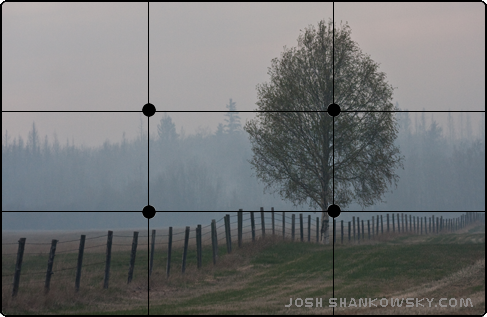


One of my close friends once told me that photography is more of an art of exclusion, where you exclude everything you don't want, so what you want will be in the frame.
Following this small article I typed up we will be able to explore some basic camera shooting techniques to help you in general become a better photographer.
Rule of Thirds:
I think one of the most commons things taught in photographic composition would be the Rule of Thirds.
While composing or cropping our photograph we will imagine a grid system overlaying our photo. Our Grid will be dividing our image in thirds both vertically and horizontally.

The rule of thirds usually comes in handy when positioning the horizon. It's tempting to stick it across the centre of the frame, but unless you're shooting a symmetrical scene, such as reflections in a lake, the result tends to look very static and lifeless. A much better approach is to place the horizon one third from the top or the bottom of the frame, so you're emphasising either the sky or ground.
While we have our basic grid lines, we also have what I like to call the centre of interest. This is the point of which our imaginary lines cross. Each picture should have only one centre of interest being used. Objects of lesser importance within the photograph must support and focus attention on the main feature alone, our primary object, our big kahuna.

We can see that in the picture above I am trying to emphasise the smoke filled sky and our centre of interest is the tree on the right hand side.
Lines are also a great, useful photographic strategy. They are often used to guide your viewers to the object of importance.
Verticle Lines: Usually symbolizing strength, power and stability.
Horizontal Lines: The horizontal line usually conveys stability and tranquility. This can also explain why staring into the horizon is very soothing.

Diagonal Lines: These lines usually create some sort or perspective into the photo and often makes the viewer look more into the photo. Often these lines bring a sence of motion and action.
Zig-Zag Lines: When thinking of a zig zag line the best example that comes to mind is a lightning bolt. These lines have energy, they are active, starting and stopping, often creating anxiety.
Curved lines: like a diagnol line these also create a sence of motion, but one that is more gentle and graceful.

Questions? Comments? Purchasing? E-mail: shank@SpassoEntertainment.com